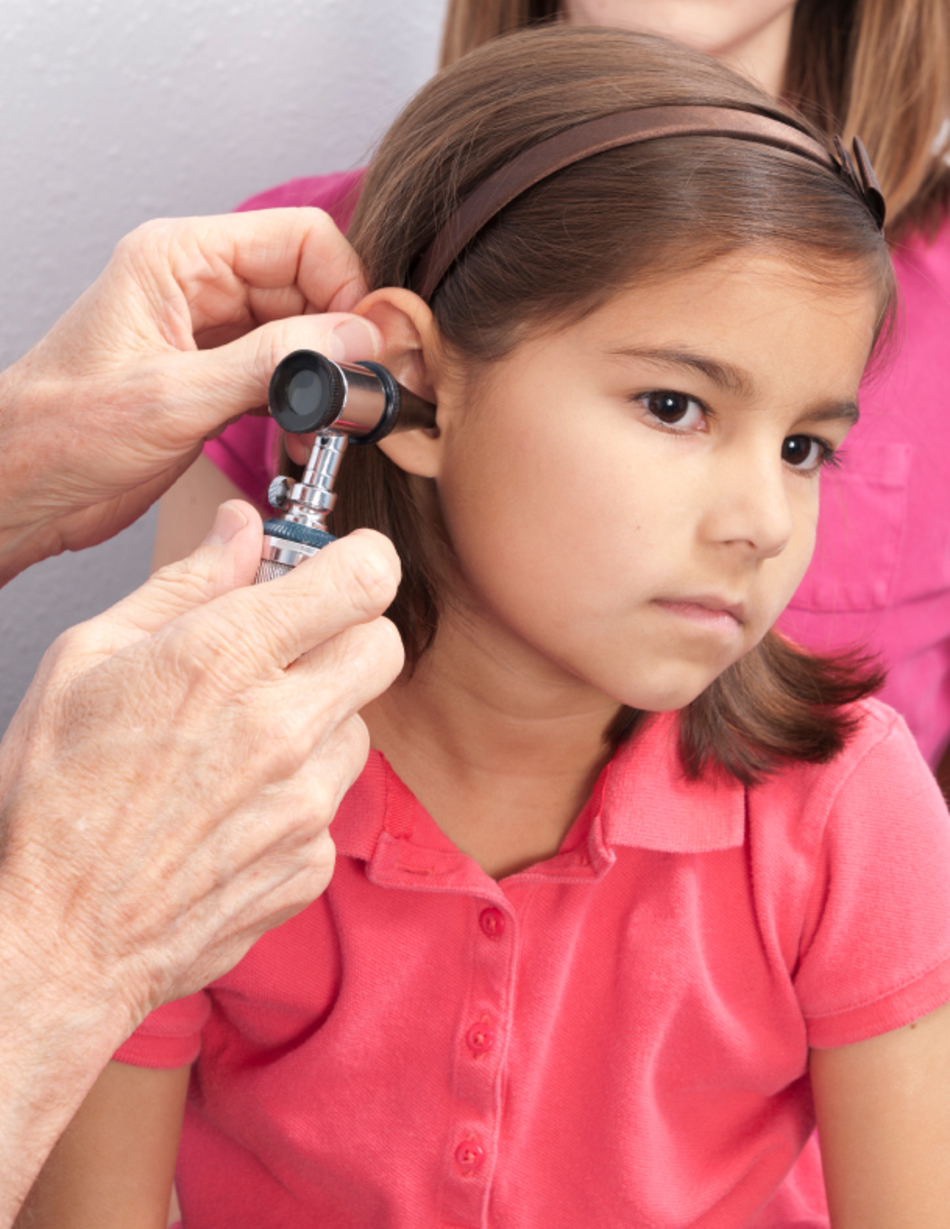
Swimmers get water in their ears a lot. But when fluid starts coming out of the ears, it's time to see the doctor.
If your child has swimmer's ear, you'll probably know it pretty quickly. He or she may have painful ear canals, their ear will hurt if it's moved up and down or if the tab on the outer ear that covers the ear canal is pushed in. If the child's ear feels really plugged up or you see discharge coming out of the ear. Now the discharge will be clear at first. But if it's not treated within 24 hours, it usually becomes yellow, and more like puss coming out of the ears. Clear drainage without ear pain is most likely water. That's not concerning for an infection.
Swimmer's ear occurs when your child's ears have been in the water for long periods of time and the water gets trapped in the ear canal. And the lining becomes damp, swollen, and prone to infection. Children are more likely to get swimmer's ear from swimming in a lake or a river compared to swimming in swimming pools or the sea. During the hottest weeks of summer, some lakes have really high levels of bacteria and narrow ear canals of children increase the risk of swimmer's ear.
Cotton swabs also contribute to the problem by causing wax build up. When you go to clean your clean your ears with a Q-tip, you're actually pushing the wax in further, and then you can get water trapped behind it. Swimmer's ear is easy to treat and the symptoms should be better within three days of starting treatment and cleared up within seven days.
Your child will need eardrops prescribed by your pediatrician that have both an antibiotic and a steroid in them. Be sure to run the eardrops into the ear canal with your child lying on his side so that air isn't trapped under the drops. Move the earlobe back and forth to help the eardrops pass down deep into the canal. And be sure to finish the eardrops as prescribed to make sure the infection is completely treated.
Generally, your child should not swim until the symptoms are gone. Continued swimming may cause a slower recovery, but it won't cause any serious problems. For mild swimmer's ear without puss coming out of the ear or serious ear pain, you can treat it at home. Use a mixture of one part water and one part white vinegar, and put 3 drops in the affected ear. After five minutes, remove the drops by turning the head to the side and rubbing the ear. Do this twice a day until the ear canal feels normal again.
So often parents ask, "How can I prevent swimmer's ear in my child?" First, limit how many hours a day your child spends in the water. The key to prevention is keeping the ear canals dry when your child is not swimming. After swimming, get all of the water out of the ear canals by turning the head to the side and pulling out the earlobe in different directions to help water run out. You can also put a towel into the ear and help soak up the water. Dry the opening to the ear canal very carefully so you don't injure the ear canal by going too far in.
If recurrent ear infections are a big problem, rinse your child's ear canals with three drops of rubbing alcohol each time he or she finishes swimming to help dry the ear canal and kill germs.
Another helpful home remedy is to use the solution of half water and half vinegar. The vinegar will restore the normal acid balance to the ear canal. Your child may also benefit from using earplugs or a swimming cap to keep the water out of the ear canal in the first place. Remember, rubbing alcohol is helpful for preventing swimmer's ear, but not for treating it because it stings the ear too much.
When Does Your Child Really Need Lab Work?
Parents often ask about blood tests during routine pediatric visits, but pediatrician Cindy Gellner, MD, clarifies that healthy children rarely need them. She shares some of the criteria for screenings in young patients and how insurance factors into decision-making.
What to Do When Your Baby Sounds Congested
Newborns cannot blow their noses, and they are not great at breathing through their mouths either—so even a little mucus can sound dramatic. Pediatrician Cindy Gellner, MD, shares what is normal when it comes to newborn sneezing and snorting, how to use saline and suction safely, and when to check in with your pediatrician.
Understanding Childhood Mood Disorders Beyond Bipolar
Is your child often irritable or prone to temper outbursts? Pediatrician Cindy Gellner, MD, clarifies the distinctions between bipolar disorder and Disruptive Mood Dysregulation Disorder (DMDD), emphasizing the importance of accurate diagnosis in childhood mood disorders.
More Answers to Your Questions on Keeping Your Kid Healthy and Happy
Latest trends and issues in children's health on the Healthy Kids Zone with Dr. Cindy Gellner







